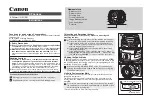
Document Information
xi
Site Preparation
There are several requirements that should be properly addressed prior to installation at the site. The
following specifications are requirements for proper installation and operation of the unit:
Ambient Environment Conditions
: Avoid positioning the unit near heaters or heating
system outputs. Avoid exposure to direct sunlight. Use proper maintenance to ensure that
the unit is free from dust, dirt, smoke, particles, chemicals, water or water condensation,
and exposure to EMI.
Accessibility
: The location used should allow easy access to unit connections and cables.
Safety
: Cables and electrical cords should be routed in a manner that prevents safety
hazards, such as from tripping, wire fraying, overheating, etc. Ensure that nothing rests on
the unit’s cables or power cords
.
Ample Air Circulation
: Leave enough space around the unit to allow free air circulation.
Cabling Considerations
: Units should be placed in locations that are optimal for the
type of video cabling used between the unit and the cameras and external devices.
Using a cable longer than the manufacturer’s specifications for optimal video signal
may result in degradation of color and video parameters.
Physical Security
:
The unit provides threat detection for physical security systems. In order
to ensure that the unit cannot be disabled or tampered with, the system should be installed
with security measures regarding physical access by trusted and un-trusted parties.
Network Security
:
The unit transmits over IP to security personnel for video surveillance.
Proper network security measures should be in place to assure networks remain operating
and free from malicious interference. The unit is intended for installation on the backbone
of a trusted network.
Electrostatic Safeguards
:
The unit as well as other equipment connected to it (relay
outputs, alarm inputs, racks, carpeting, etc.) shall be properly grounded to prevent
electrostatic discharge.
The physical installation of the unit is the first phase of making the unit operational in a security plan.
The goal is to physically place the unit, connect it to other devices in the system, and to establish
network connectivity.













































